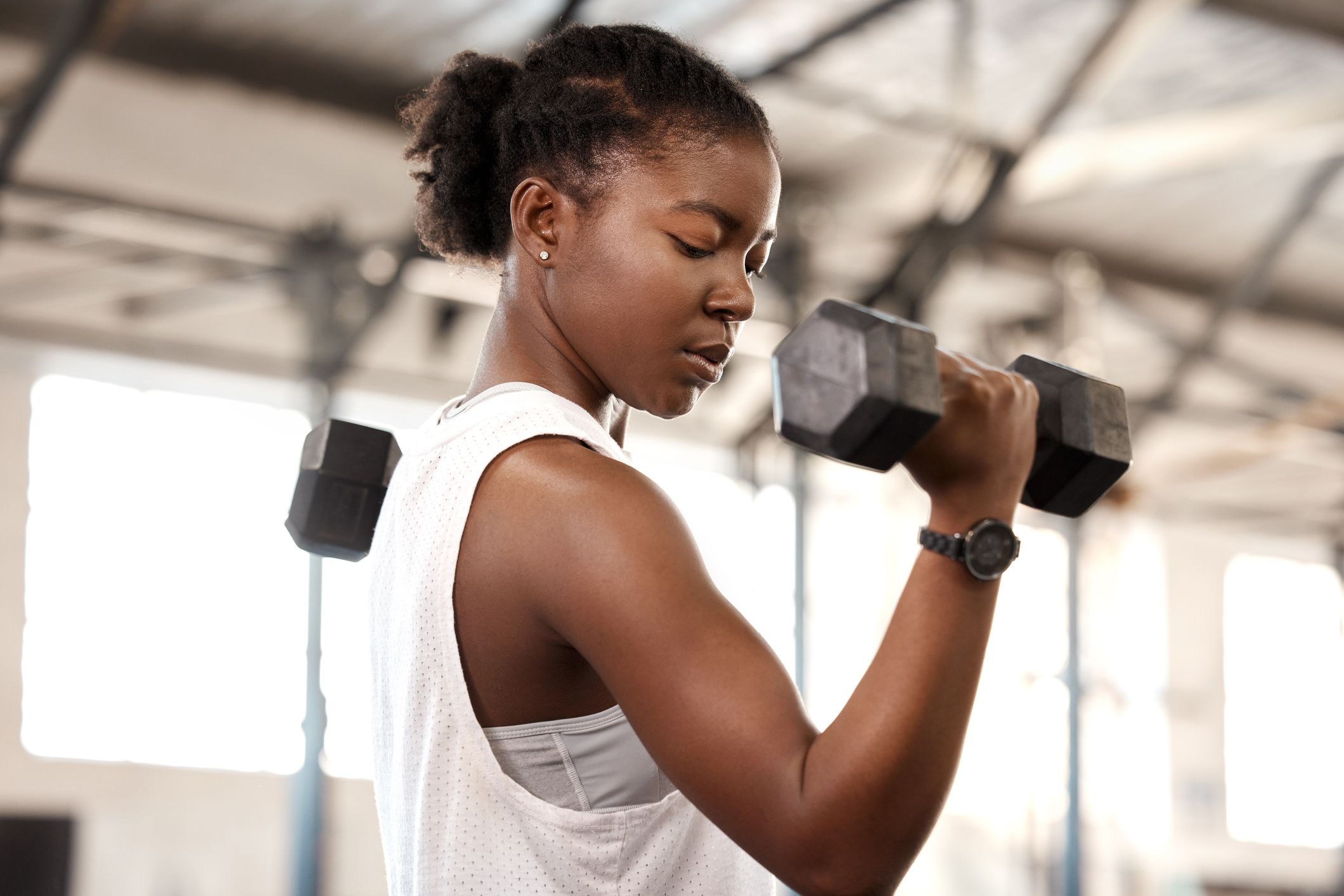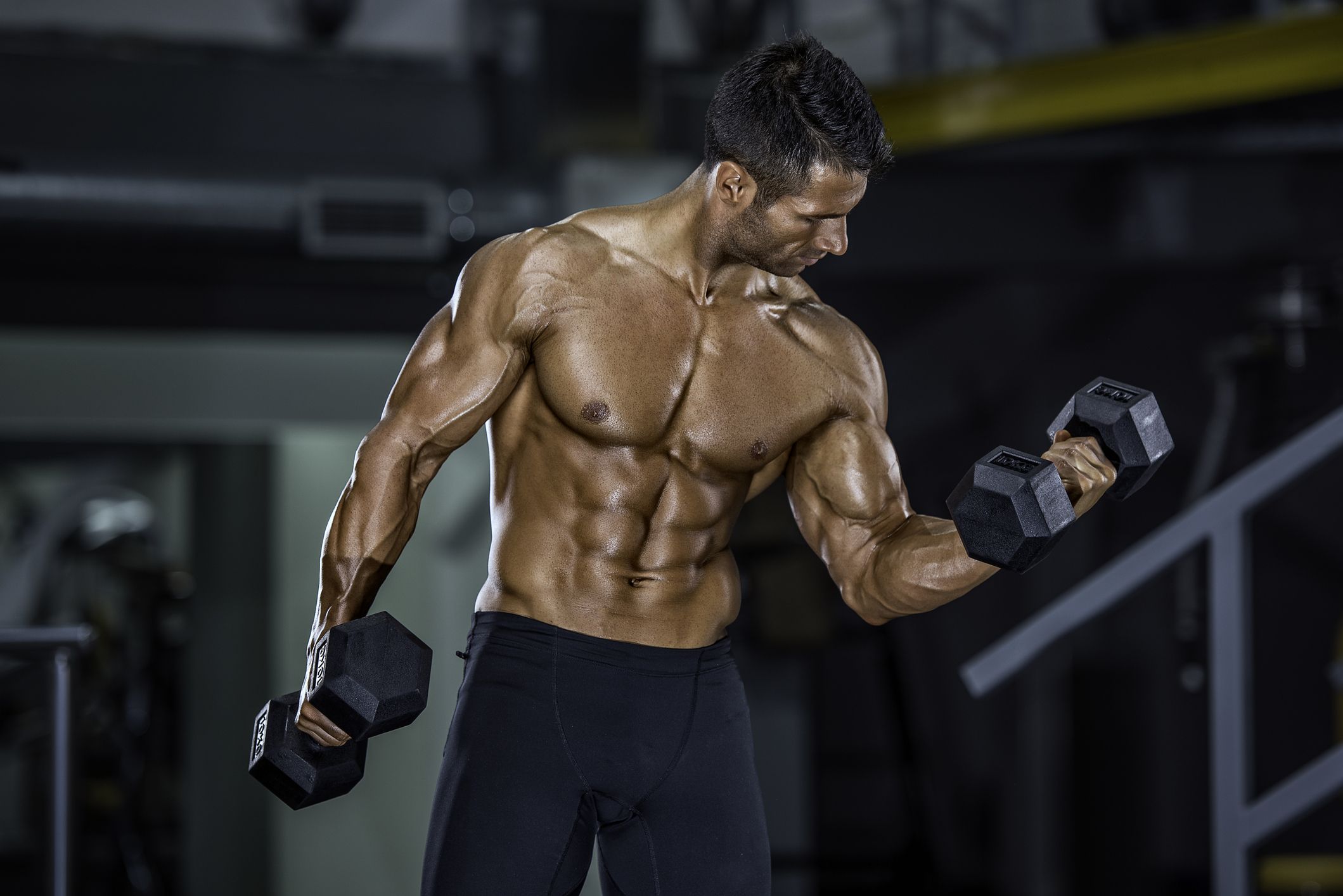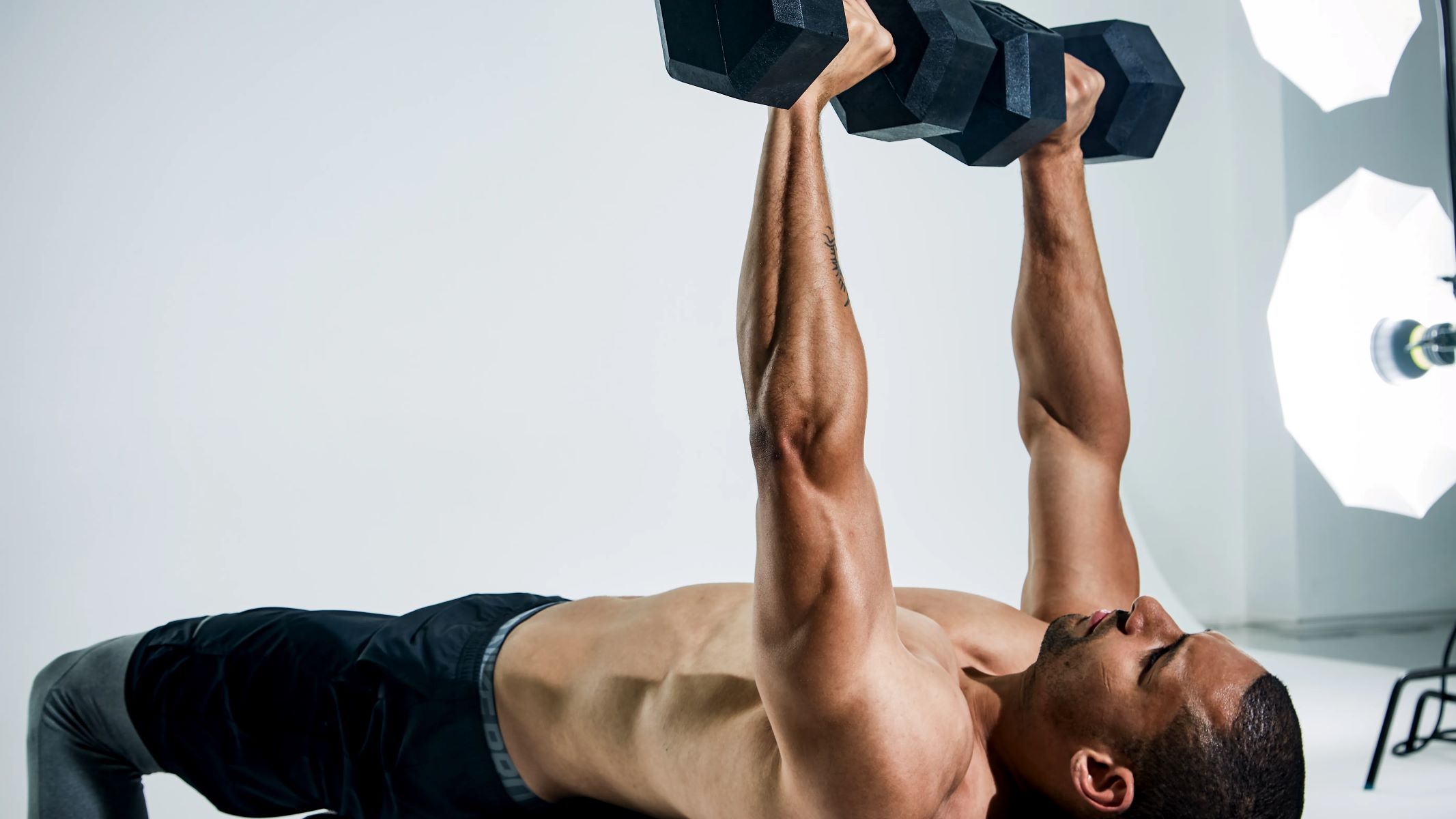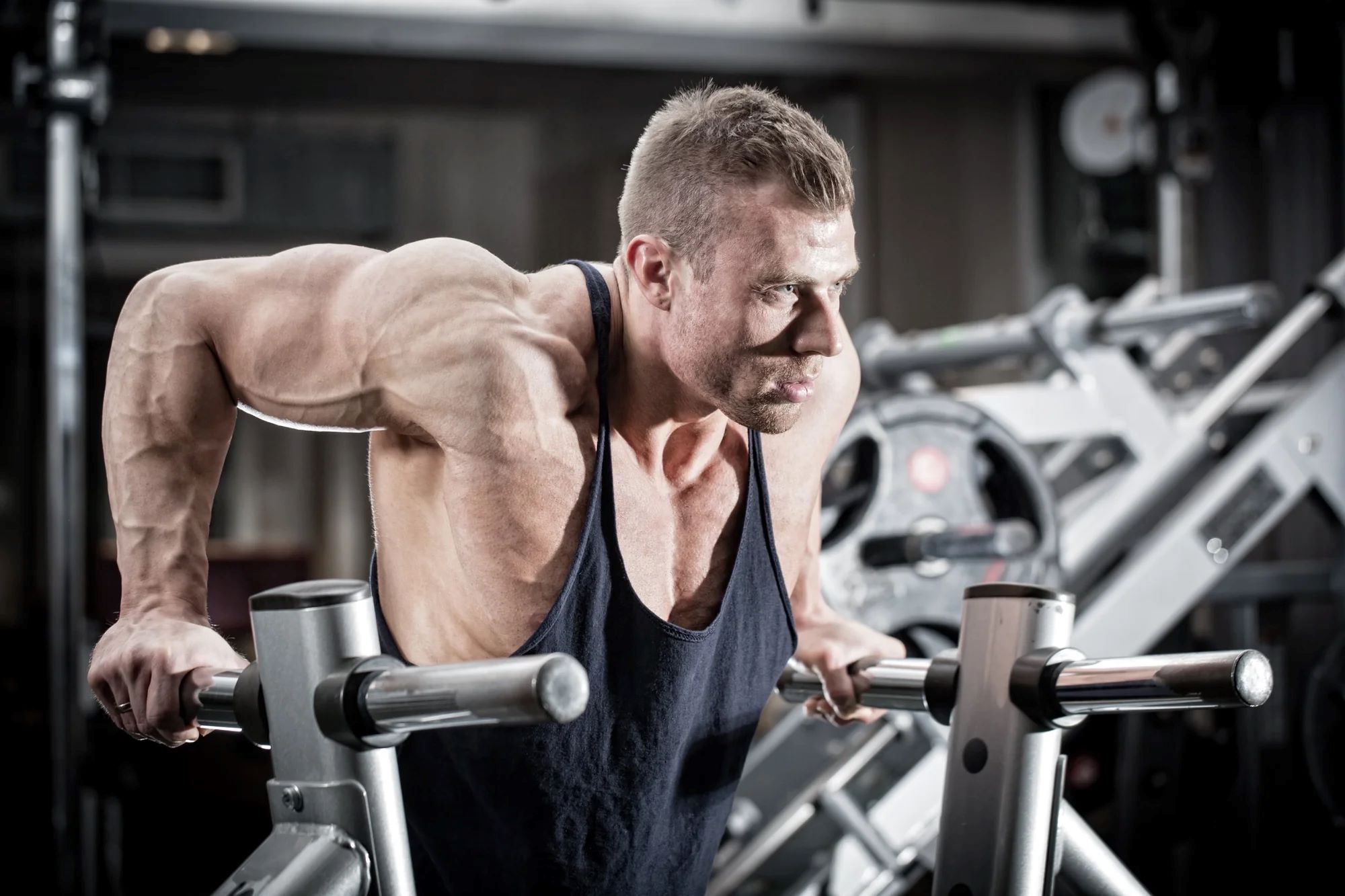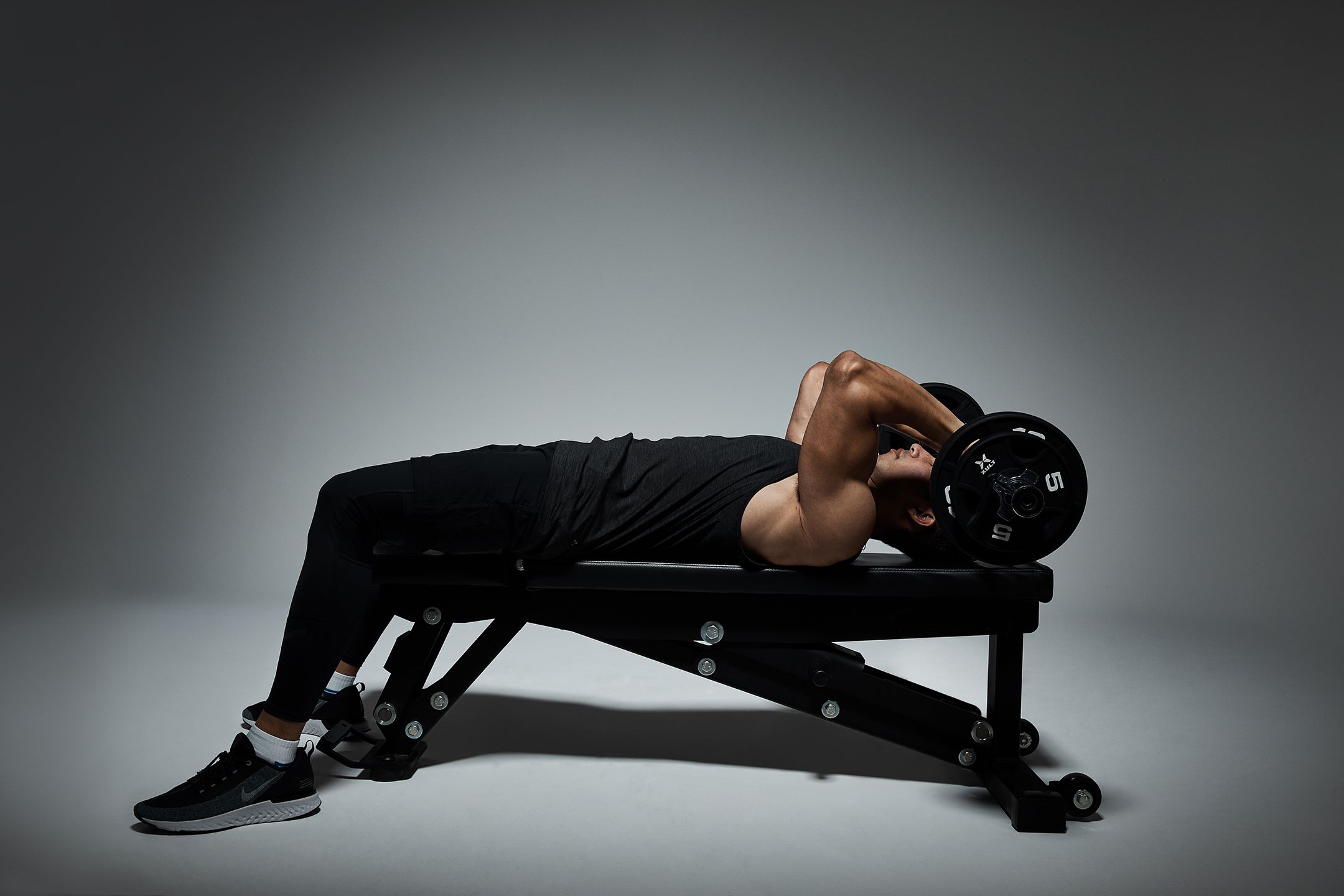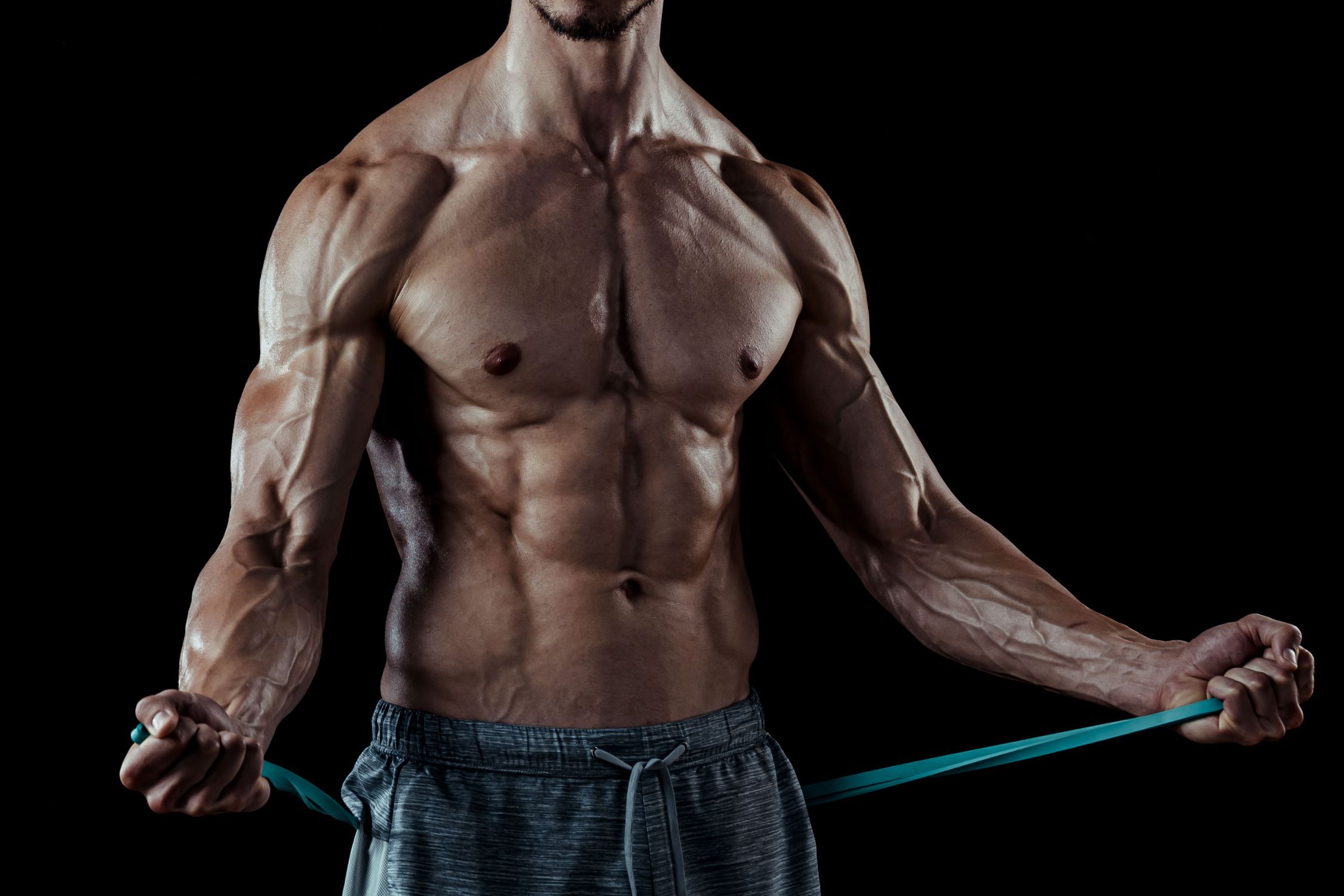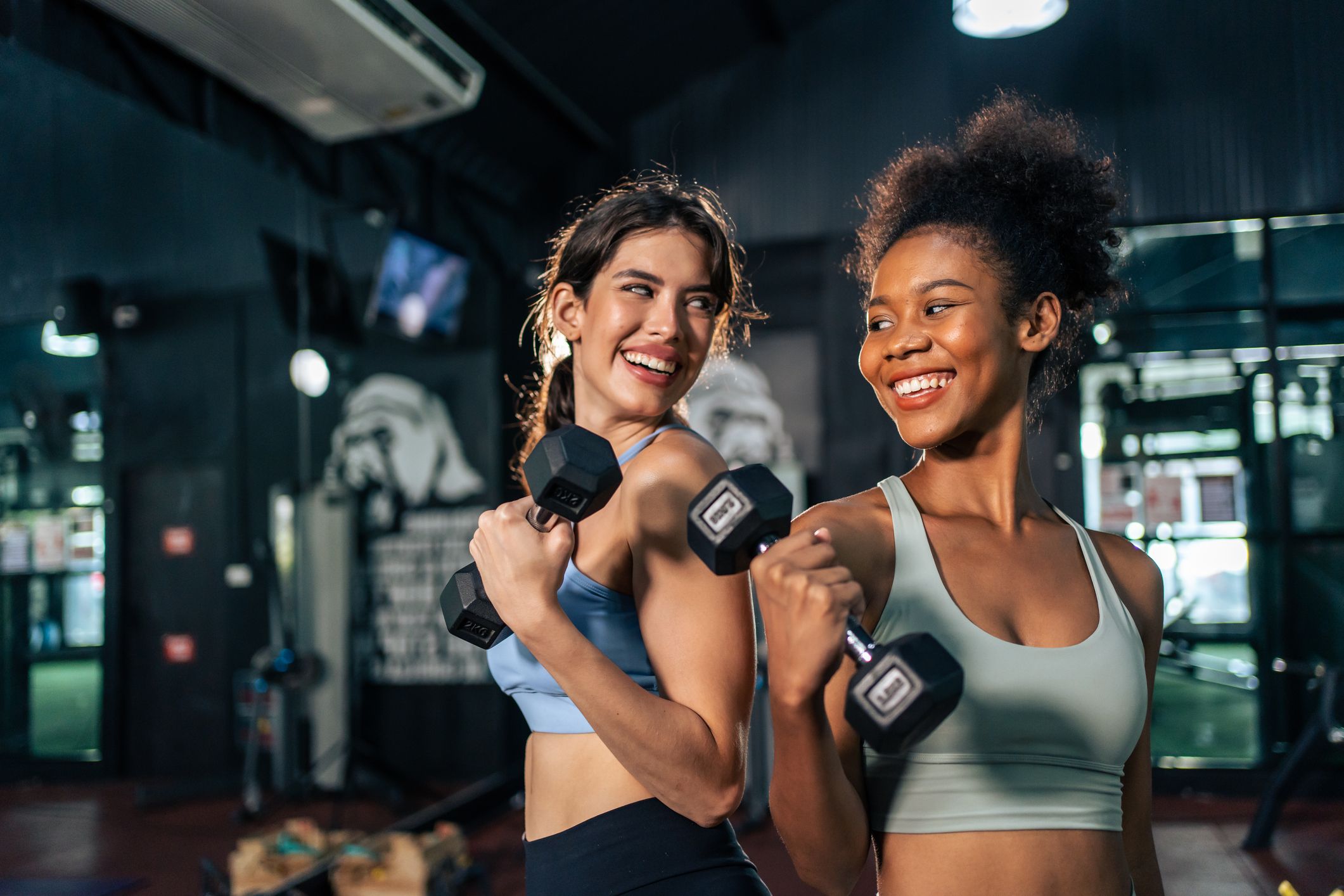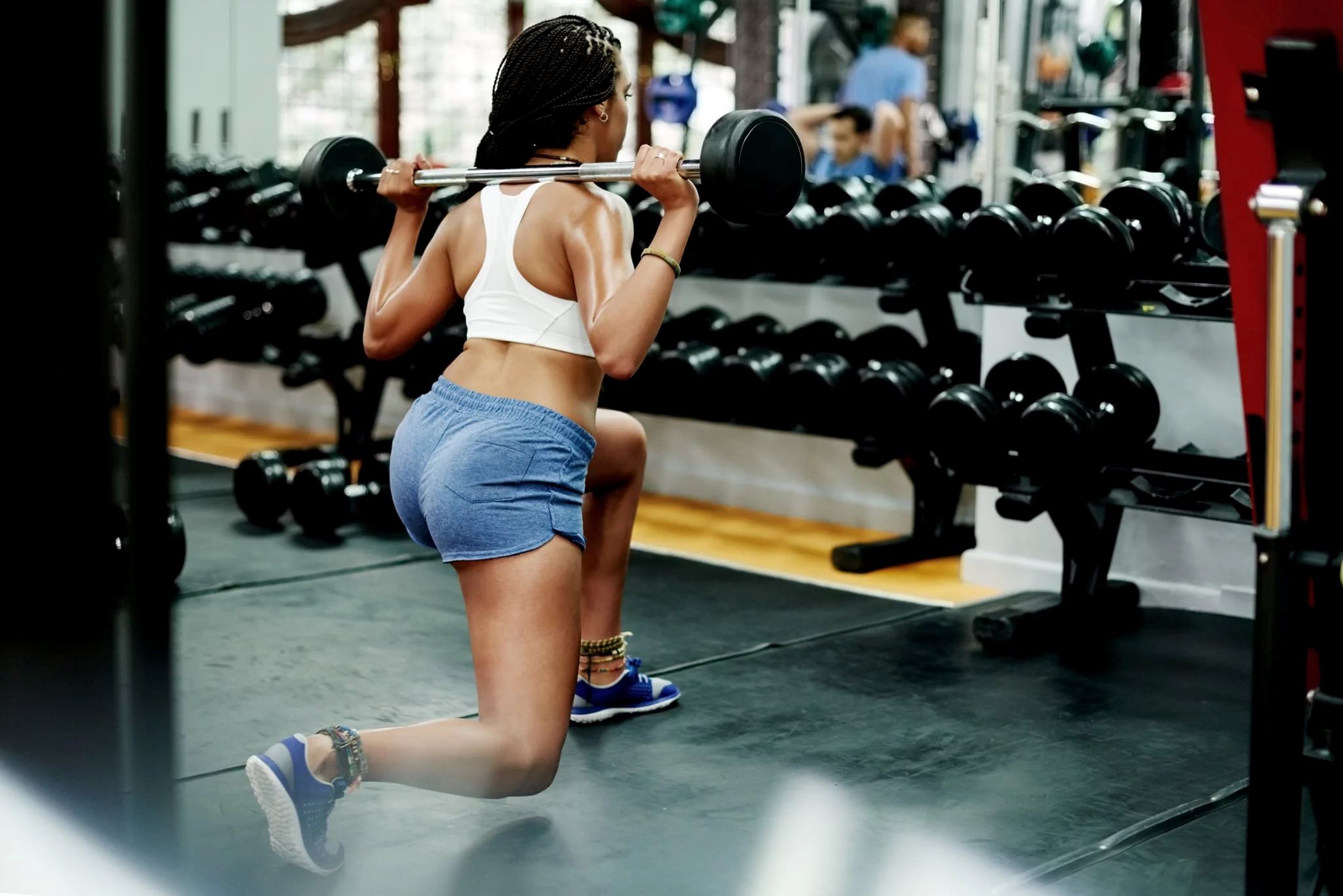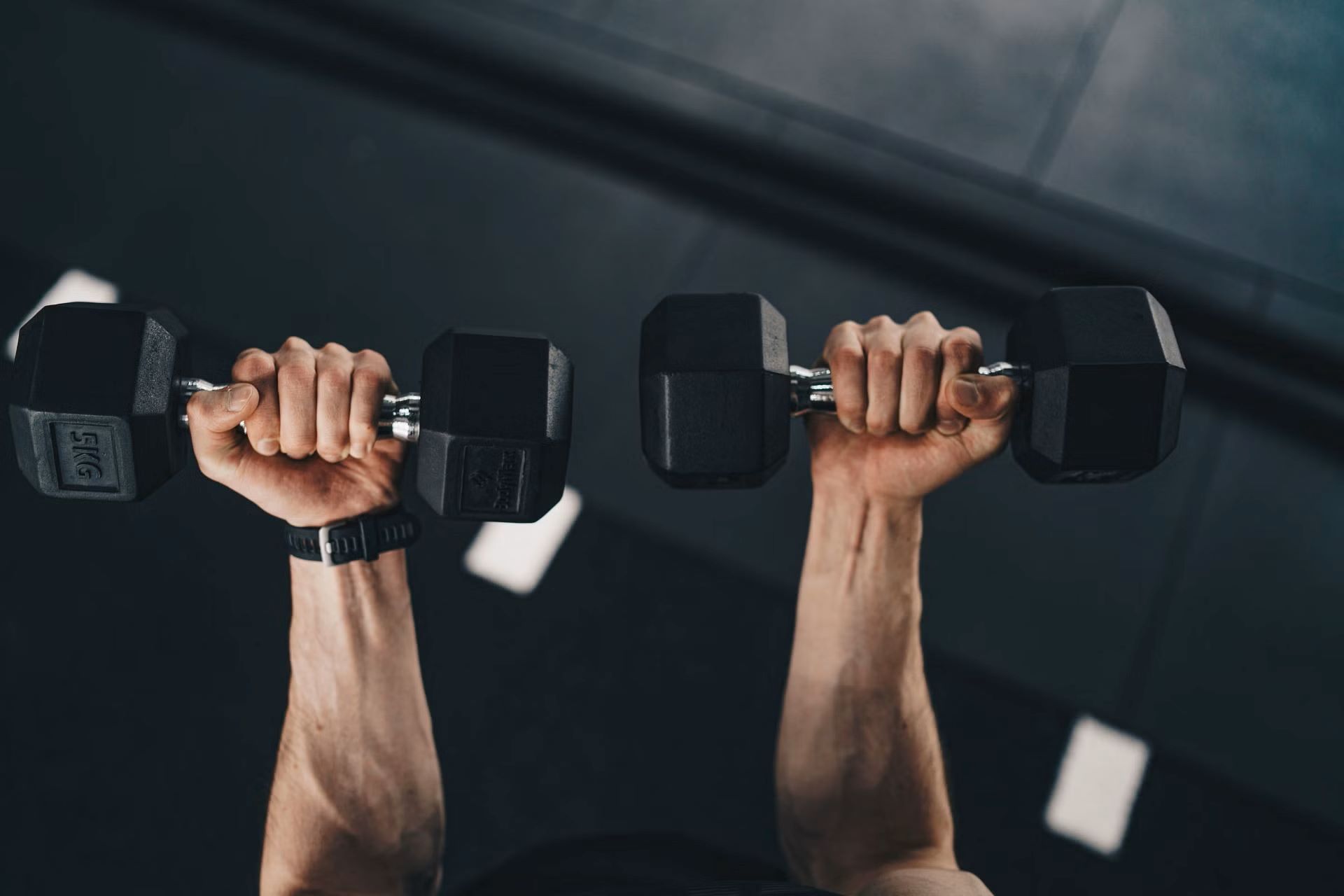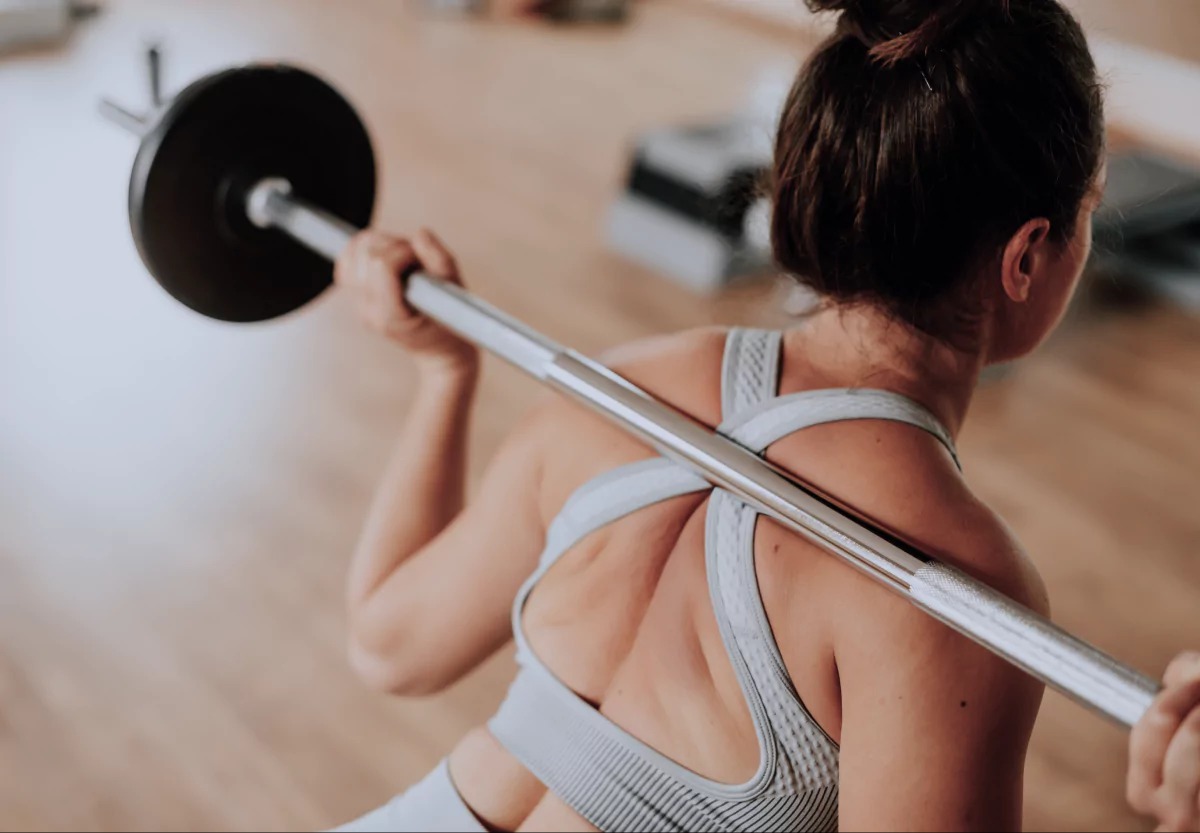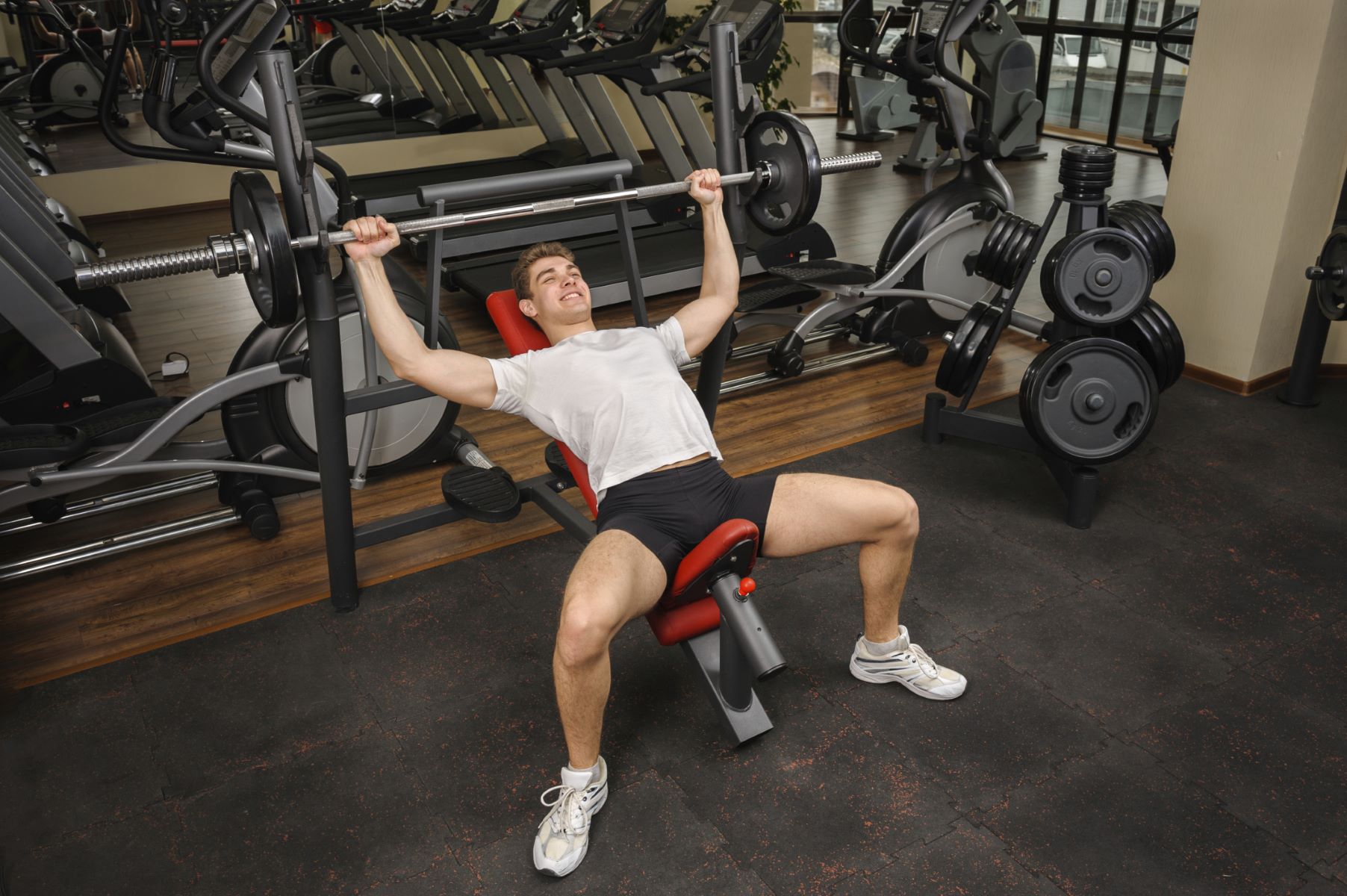

Featured
What Muscles Do Bench Press Workout
Published: August 12, 2023
Want to know what muscles the bench press works out? Read our featured article where we break down the specific muscles targeted in this popular exercise.
Introduction
The bench press is one of the most popular exercises for building upper body strength and muscle mass. It is a compound movement that primarily targets the chest muscles, but it also engages several other major muscle groups in the upper body. Understanding the muscles activated during bench press can help you optimize your training and target specific muscle groups more effectively.
When performing the bench press, you lie on a flat bench and push a weight bar upwards using your arms. This movement primarily targets the pectoralis major, which is the main muscle responsible for the size and shape of your chest. However, several other muscles in the shoulders, arms, and core also play a significant role in stabilizing and assisting in the movement.
By targeting multiple muscle groups simultaneously, the bench press allows for efficient and effective upper body strength development. Understanding the specific muscles involved will not only help you achieve better results, but also minimize the risk of injury.
In the following sections, we will explore the different muscle groups activated during the bench press and discuss their respective roles in the exercise. Understanding how each muscle contributes to the movement will provide valuable insights into proper technique, muscle targeting, and overall performance.
Chest Muscles Activated during Bench Press
The bench press is renowned for its ability to develop and strengthen the chest muscles. The primary muscle group targeted during this exercise is the pectoralis major, also known as the pecs.
The pectoralis major is a large, fan-shaped muscle that covers much of the front of the chest. It consists of two main sections, the clavicular head (upper chest) and the sternal head (lower chest). The bench press primarily activates both sections of the pecs, emphasizing the development of a well-rounded chest.
During the bench press, the pectoralis major contracts concentrically to push the weight bar away from the chest, providing the primary force for the movement. This movement effectively targets the overall size and strength of the chest muscles, resulting in a more defined and muscular chest appearance.
In addition to the pectoralis major, the bench press also activates the pectoralis minor, which is a smaller muscle located underneath the pecs. While the pectoralis minor plays a less significant role in the movement, it helps in stabilizing the shoulder during the exercise and contributes to overall chest development.
It is important to note that the activation and development of the chest muscles during the bench press can vary depending on the grip width used. A wider grip places more emphasis on the outer portion of the pecs, while a narrower grip targets the inner portion of the chest. Incorporating different grip variations into your training can help you achieve a well-rounded and balanced chest development.
Shoulder Muscles Activated during Bench Press
While the bench press primarily targets the chest muscles, it also heavily engages the muscles of the shoulders, specifically the anterior deltoids.
The anterior deltoids, or front deltoids, are located at the front of the shoulder and are responsible for the flexion and horizontal adduction of the arm. During the bench press, these muscles contract to assist in pushing the weight bar away from the chest.
In addition to the anterior deltoids, the lateral deltoids and the posterior deltoids also play a supporting role during the bench press. The lateral deltoids, which are located on the sides of the shoulders, assist in stabilizing the weight bar during the exercise. The posterior deltoids, located at the back of the shoulders, help in providing stability and keeping the shoulders properly aligned.
Proper activation and engagement of the shoulder muscles during the bench press are crucial for maintaining proper form and preventing injuries. It is important to ensure that the weight bar is balanced and centered evenly above the shoulders, with the elbows positioned slightly below the shoulders. This alignment helps distribute the load evenly across the shoulder muscles, reducing the risk of strain or injury.
It is also worth noting that individuals with pre-existing shoulder injuries or shoulder mobility issues may need to modify their bench press technique or choose alternative exercises to prevent further discomfort or injury. Consulting with a qualified fitness professional or physical therapist can provide guidance on proper form and exercise modifications specific to your needs.
Tricep Muscles Activated during Bench Press
While the bench press is primarily known for its impact on the chest muscles, it also engages the triceps, which are located at the back of the upper arm and play a vital role in arm extension.
During the bench press, the triceps serve as synergistic muscles, assisting the chest muscles in extending the arms and pushing the weight bar away from the chest. Specifically, the long head of the triceps is the most active during this exercise.
The long head of the triceps originates from the scapula and runs down the back of the upper arm, crossing the shoulder and elbow joints. It contributes significantly to the overall strength and size of the triceps muscle group.
Proper form is essential for effectively targeting and activating the triceps during the bench press. To engage the triceps more, it is important to maintain a close grip on the weight bar, keeping the hands shoulder-width apart or even slightly narrower. This narrow grip places more emphasis on the triceps, allowing for greater activation and stimulation of these muscles.
It is worth noting that individuals with pre-existing triceps injuries or limitations may need to adjust their grip or choose alternative exercises to accommodate their needs. Consulting with a fitness professional or physical therapist can provide guidance on proper modifications and exercises that take into consideration any limitations or restrictions.
Incorporating tricep-specific exercises into your training routine can also help target and develop these muscles further. Movements such as tricep dips, close-grip bench presses, and tricep pushdowns can strengthen and sculpt the triceps, complementing the benefits gained from the bench press.
Bicep Muscles Activated during Bench Press
Although the bench press primarily targets the chest, shoulders, and triceps, the bicep muscles also play a role in the exercise. The biceps brachii, commonly known as the biceps, are located on the front of the upper arm and are responsible for arm flexion.
During the bench press, the biceps act as stabilizer muscles to support and assist the movement. While they are not the primary muscles responsible for pressing the weight bar, they play a supportive role in maintaining proper form and stability.
As the arms straighten in the upward phase of the bench press, the biceps eccentrically contract to control the movement and prevent the arms from fully extending. This eccentric contraction helps stabilize the elbows and maintain tension in the upper arm muscles throughout the exercise.
While the biceps are not the primary focus of the bench press, it is essential to remember that the proper execution of the exercise relies on engaging and activating all the major muscle groups involved. This includes the biceps, which contribute to overall upper body strength and stability.
If you are specifically looking to target and develop your biceps, it is advisable to incorporate additional exercises that isolate and specifically target these muscles, such as bicep curls or hammer curls. Combining the bench press with bicep-focused exercises can help achieve balanced development and enhance the overall aesthetic appearance of the arms.
Core Muscles Activated during Bench Press
The core, which includes the muscles of the abdomen, lower back, and hips, plays a crucial role in providing stability and power during the bench press. While the primary focus of the exercise is on the chest, shoulders, and triceps, the core muscles act as stabilizers and contribute to overall strength and control.
During the bench press, the core muscles engage to maintain a stable and rigid torso. This stability ensures that proper force is transferred from the upper body to the lower body, allowing for efficient power generation and optimal performance.
The rectus abdominis, commonly known as the abs, is one of the core muscles activated during the bench press. It runs vertically along the front of the abdomen and aids in maintaining a stable and neutral spine position throughout the exercise.
In addition to the rectus abdominis, the obliques, located on the sides of the abdomen, also contribute to core stability during the bench press. These muscles help in preventing excessive rotation or lateral movement of the trunk, enhancing control and balance throughout the movement.
The erector spinae, a group of muscles located along the length of the spine, is another set of core muscles engaged during the bench press. These muscles provide support to the lower back, helping to maintain proper posture during the exercise and prevent excessive strain on the spine.
Having a strong and stable core is not only crucial for optimal performance in the bench press, but it also carries over to various other exercises and daily activities. Incorporating core-specific exercises, such as planks, Russian twists, or deadlifts, into your training routine can further enhance core strength and stability, adding to the benefits gained from the bench press.
Stabilizer Muscles Activated during Bench Press
In addition to the major muscle groups discussed earlier, several smaller muscles act as stabilizers during the bench press. These muscles work together to maintain proper form, balance, and control throughout the exercise.
One of the primary stabilizer muscles activated during the bench press is the serratus anterior. This muscle is located on the sides of the chest and plays a crucial role in stabilizing the scapulae, or shoulder blades. It helps in maintaining proper shoulder alignment and stability, allowing for a more efficient transfer of force during the exercise.
The rhomboids, located between the shoulder blades, also act as stabilizers during the bench press. They help in retracting the scapulae and maintaining proper posture, contributing to overall upper body stability throughout the movement.
The rotator cuff muscles, which include the supraspinatus, infraspinatus, teres minor, and subscapularis, play a vital role in stabilizing and protecting the shoulder joint during the bench press. These muscles work together to keep the humerus securely in the socket and prevent excessive movement or strain on the shoulder.
Additionally, the muscles of the forearm, including the brachialis and brachioradialis, contribute to stabilizing the weight bar during the bench press. These muscles help in maintaining a strong and secure grip, allowing for proper control and stability during the exercise.
Engaging and strengthening the stabilizer muscles during the bench press is essential for maintaining proper form, preventing injuries, and improving overall performance. Incorporating exercises that target these muscles, such as scapular retractions, shoulder external rotations, or forearm curls, can help enhance stability and provide a solid foundation for your bench press and other upper body exercises.
Conclusion
The bench press is a highly effective exercise for developing upper body strength and muscle mass. Understanding the muscles activated during the bench press allows you to optimize your training and target specific muscle groups for better results.
The primary muscle group activated during the bench press is the pectoralis major, which targets the chest muscles and contributes to a well-rounded and muscular chest appearance. The anterior deltoids in the shoulders, along with the triceps, play a significant role in pushing the weight bar away from the chest and stabilizing the movement.
While the bench press is not specifically a bicep-focused exercise, the biceps act as stabilizers and support the movement. The core muscles provide stability and strength, while the stabilizer muscles, such as the serratus anterior and rotator cuff muscles, ensure proper alignment and control throughout the exercise.
Incorporating different grip variations, such as a wider or narrower grip, can target specific areas of the muscles being worked. Additionally, combining the bench press with exercises that isolate specific muscle groups, such as tricep dips or bicep curls, can further enhance overall upper body development.
Remember, proper form and technique are essential to maximize the benefits of the bench press and minimize the risk of injuries. If you have any previous injuries or limitations, it is recommended to consult with a fitness professional or physical therapist for guidance on modifications or alternative exercises.
Incorporating the bench press into your training routine, along with a well-rounded program that includes variations and exercises targeting different muscle groups, will help you achieve a balanced and powerful upper body.
So, next time you hit the gym, keep in mind the muscles activated during the bench press and reap the benefits of this iconic exercise for a stronger and more defined physique.
